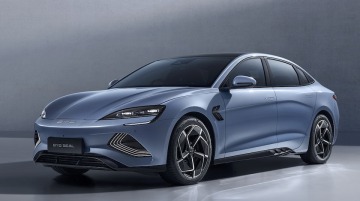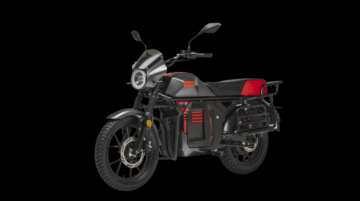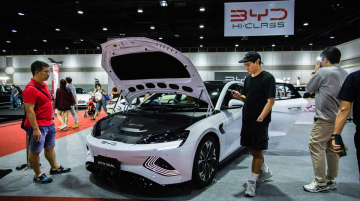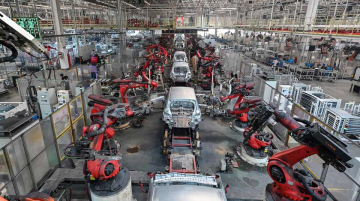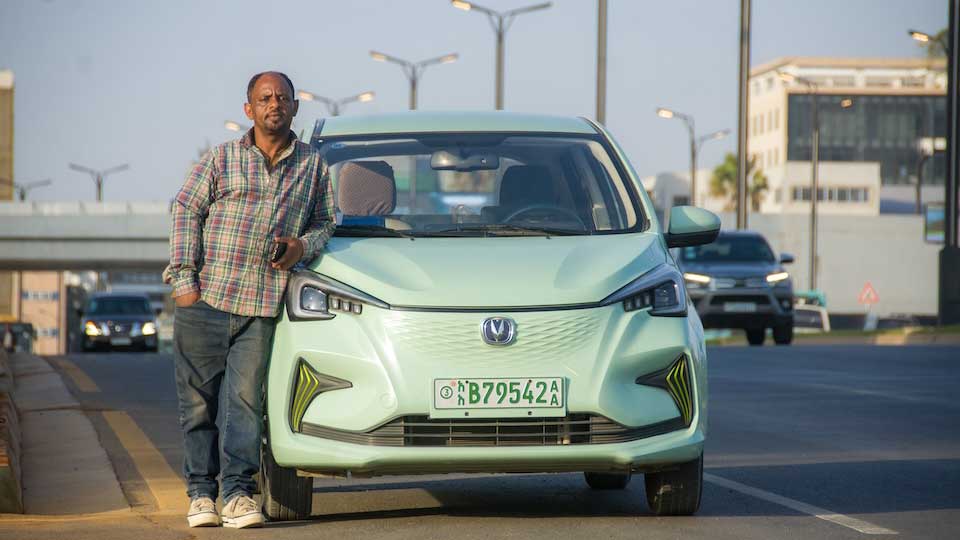
Solomon Shenkutie, a ride-hailing driver in Ethiopia’s bustling capital, Addis Ababa, made a life-changing decision six months ago: he swapped his gasoline-powered car for a Chinese-made electric vehicle.
“I spent most of my earnings on fuel, and prices are only expected to rise,” said Shenkutie, who now drives a Changan Benben E-Star, a compact five-seater produced through a Sino-Ethiopian joint venture. His switch came after months of research and drew on his expertise as an electrician.
Shenkutie’s decision reflects a broader shift in Ethiopia, where the government has taken bold steps to phase out internal combustion engine (ICE) vehicles. In February 2024, Ethiopia banned the import of ICE vehicles, aiming to reduce its reliance on oil and preserve dwindling foreign currency reserves. The move followed a sharp cut in fuel subsidies, which sent prices soaring from $0.21 to $0.89 per liter in less than a year.
By 2026, fuel costs are projected to triple.
“Most of my family and friends thought I was making a bad decision,” Shenkutie admitted. “But my car has exceeded expectations in terms of power, comfort, and battery life.” He purchased the vehicle with a bank loan, paying monthly installments, but now saves significantly on fuel and maintenance. “I can still comfortably provide for my family,” he said.

Chinese Investment Fuels Ethiopia’s EV Growth
Over the past five years, Chinese firms in Ethiopia have introduced fully and semi-assembled EVs to the Ethiopian market while also building critical charging infrastructure. Chinese companies, including those dealing with EVs across Ethiopia, are accelerating the adoption of electric vehicles.
Currently, Ethiopia has almost 1.5 million vehicles out of which EV’s make up a paltry seven percent despite the government’s ban on importing gas-powered private vehicles and an ambitious plan to import more that half a million electric vehicles by 2030.
“Chinese investment in Ethiopia’s electric vehicle sector has been transformative, particularly in job creation, industrial development, and technology transfer,” said Eyuel Bogale, an assistant project coordinator at Ethiopia’s Ministry of Transport. “The government is actively seeking private-sector involvement, particularly from Chinese firms, to finance further infrastructure expansion.”
Ethiopia, Africa’s second-most populous nation, is home to one of the continent’s fastest-growing middle classes. In 2021, the government slashed customs and excise taxes on EVs, making them far more affordable than their gasoline-powered counterparts. Previously, exorbitant import taxes exceeding 300% meant only two out of every 1,000 Ethiopians owned a car. Since the policy change, an estimated 100,000 EVs have hit Ethiopian roads, with the government aiming to quadruple that number by 2030.

Local Companies Join the Movement
Ethiopian firms are also stepping up, partnering with Chinese vehicle manufacturers to expand the EV market. Belayneh Kindie Motors (BKM), based in Debre Birhan, about 130 kilometers from Addis Ababa, has begun assembling 12-seat minibuses and 12-meter buses using components from China’s Golden Dragon Company. Its new assembly plant, inaugurated in June 2023, has created over 500 jobs.
Tamrin Motors, a major car importer, has partnered with China’s JAC Motors to introduce affordable EVs in Ethiopia, initially through imports and later through local assembly. This shift ensures that Ethiopia will not only import vehicles but also benefit from job creation and other aspects of the EV value chain.
As local assembly plans continue, Greentech Africa, one of the first firms to import Chinese EVs, currently offers six models (and plans to bring in 5,000 more vehicles over the next three years).
A Growing Market for All Income Levels
EV adoption isn’t limited to ride-hailing drivers; higher-income Ethiopians are also embracing the shift. Aida Bekele, an Addis Ababa resident, recently purchased a Chinese-made Volkswagen ID.4, which she charges at home.
“Buying an EV was a dream come true. I’ve always been environmentally conscious,” she said. “It costs me just 70 birr ($0.55) to charge my car from 20% to 80%, and I can drive 400 kilometers on a single charge.”
Bekele’s car is among the luxury EVs entering the market through companies like Haqiqa International Business, an importer of high-end Chinese vehicles which has partnered with Chinese EV manufacturer and exporter Autotec International Corp to offer models like the Volkswagen ID.4, BYD Seal U, and Toyota EVs.

Challenges in a Rapidly Changing Market
Despite this progress, Ethiopia’s EV transition faces significant hurdles. Electric vehicles remain expensive, with few models priced below $11,000. Resale values are another concern.
“Many customers struggle with reselling their cars, even those less than a year old,” said Abel Girmay, a car dealer in Addis Ababa. Unlike ICE vehicles, which often appreciate in value due to inflation and currency devaluation, EVs have not followed the same trend.
A shortage of spare parts, Girmay said, has also driven some buyers to resell their EVs shortly after purchase.
Some local ventures have struggled to sustain operations. For instance, Marathon Motors, owned by Ethiopian Olympic gold medalist Haile Gebrselassie, was the first company to assemble EVs in Ethiopia, partnering with Hyundai in 2020. However, it suspended operations two years later due to foreign currency shortages, which made importing parts unsustainable.
The Future of EVs in Ethiopia

Despite these challenges, Chinese companies’ involvement in Ethiopia’s EV sector has spurred technological advancements, job creation, and green energy initiatives.
Firms like Mobilit-E are addressing financing challenges by offering installment plans, allowing buyers to own a BYD EV with just a 20% down payment. Meanwhile, BYD has expanded its presence through a partnership with Moenco, a subsidiary of London-based Inchcape, to supply spare parts and establish a manufacturing plant.
The influx of Chinese EVs has undeniably reshaped Ethiopia’s automotive industry. While affordability and infrastructure remain key challenges, the transition to electric mobility is expected to continue accelerating, driving both economic growth and environmental sustainability.
For Shenkutie, the shift has already paid off. “I don’t regret my decision,” he said. “This car is not just a vehicle—it’s a lifeline.”
Sarah Assefa is a freelance writer based in Addis Ababa, Ethiopia.



